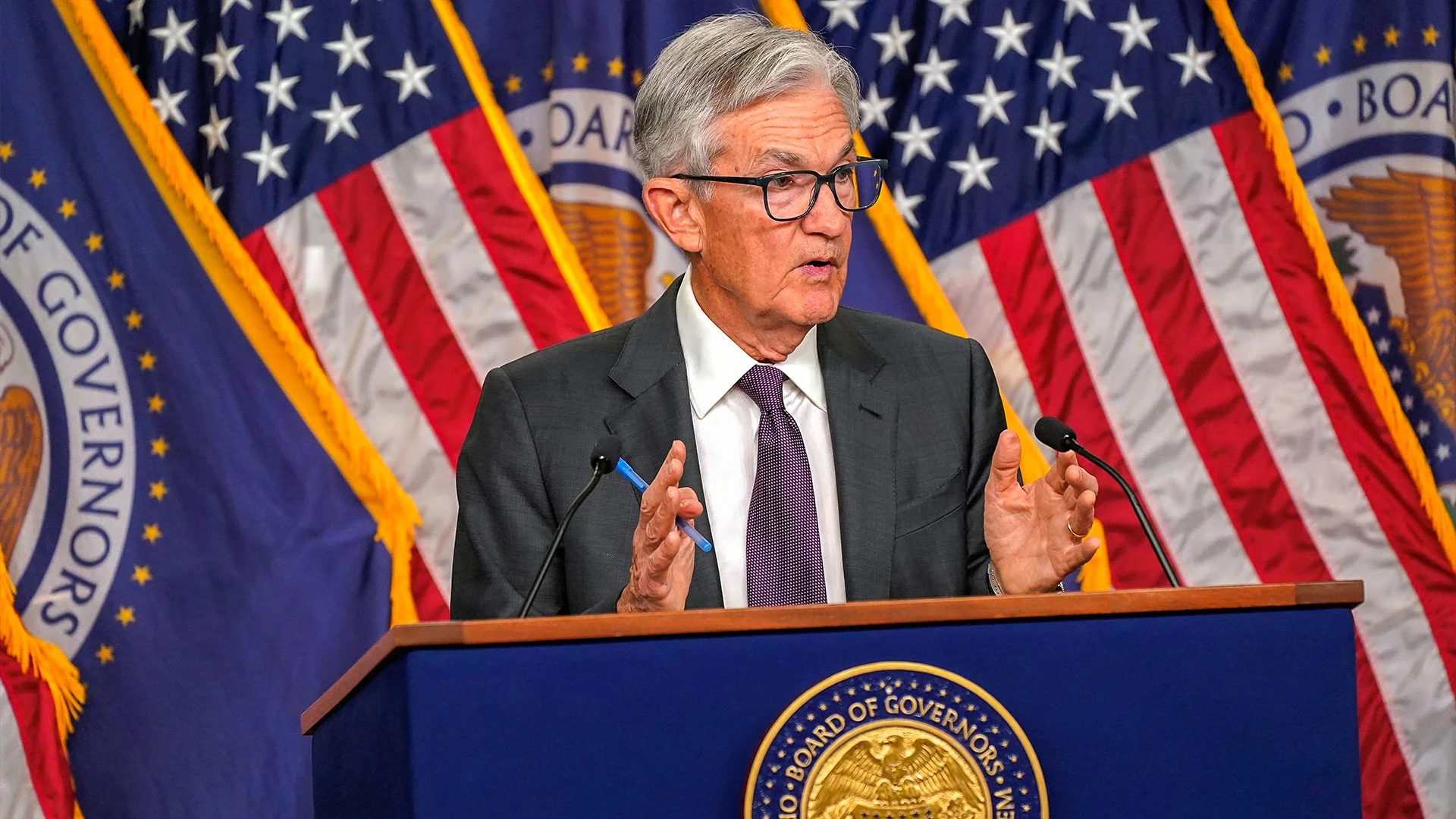Powell Faces Final Fed Storm: Divisions Rise as His Term Nears End
Background and Context
U.S. Federal Reserve Chair Jerome Powell is entering the final stretch of his term under heavy pressure — not just from markets, but from within the Fed itself. As his leadership ends in May 2026, Powell is dealing with internal disagreements, political tension, and confused market expectations.
The Fed recently cut interest rates to 3.75%–4.00%, a move that had been widely anticipated. But Powell’s follow-up statement — that another cut in December “is not a foregone conclusion” — took traders by surprise. Markets were betting heavily on another reduction, and this sudden uncertainty sent ripple effects through global financial systems, including the Forex market.

Breaking Down the Market Reaction
Following Powell’s remarks, bond yields jumped and stocks slipped. The 10-year Treasury yield surged past 4%, while the 2-year note climbed above 3.6%, signaling traders’ doubts about the Fed’s direction.
Despite Powell’s warnings, data from CME FedWatch showed that markets still priced in a 75% probability of another rate cut in December — though that’s lower than the 90% seen the day before. This clearly shows that markets don’t fully believe the Fed’s cautious tone.
For Forex traders, this kind of uncertainty leads to short-term volatility in major currency pairs such as EUR/USD, GBP/USD, and USD/JPY. The U.S. dollar tends to strengthen when the Fed turns hawkish (less likely to cut), and weaken when traders expect looser monetary policy.
Powell’s Balancing Act Inside the Fed
Behind the scenes, Powell is also managing rare internal conflict within the Federal Open Market Committee (FOMC).
Kansas City Fed President Jeffrey Schmid voted against the latest cut, wanting to keep rates steady.
Governor Stephen Miran, a Trump appointee, dissented in favor of a larger half-point cut.
Other members, like Christopher Waller and Michelle Bowman, supported Powell’s moderate approach.
This mix of hawks and doves reflects a deep divide in strategy as the Fed approaches its final few meetings under Powell. The tension is further heightened by political developments, with reports that Treasury Secretary Scott Bessent has begun interviewing possible successors for Powell’s role.
Why December Matters
Economists describe the upcoming December 9–10 meeting as a critical test. With limited new data available due to a government shutdown, policymakers will have to make decisions under uncertainty.
According to Bank of America’s Aditya Bhave, “December could get messy.” Powell’s statement suggests he’s trying to cool market expectations without committing to a pause or another cut. In essence, he’s keeping his options open — or as Morgan Stanley’s Michael Gapen put it, “pushing against market pricing to keep optionality going forward.”
That strategy, however, has its risks. If the Fed signals confusion or hesitation, markets could interpret it as weakness — and that can create sharp swings in both equities and Forex trading.
What It Means for Forex Traders
For Forex trading beginners, this is a key example of how central bank decisions directly influence currency pairs.
If Powell holds rates steady in December, the U.S. Dollar (USD) could strengthen against other major currencies like the Euro (EUR) and British Pound (GBP), as higher yields attract investors.
If the Fed cuts rates again, the USD could weaken, boosting pairs like EUR/USD or GBP/USD in the short term.
This is why understanding the tone and wording of Fed statements is just as important as the rate changes themselves. A single phrase like “not a foregone conclusion” can shift market sentiment instantly.
Traders who follow the Global Markets Eruditio (GME Academy) approach learn to interpret these signals and position themselves ahead of such moves — by combining economic data with sentiment analysis.
Possible Outcomes and Broader Impact
If Powell manages to maintain balance and unity within the Fed, he could leave behind a legacy of stability under pressure. But if divisions deepen, his final months may be remembered for internal conflict and shaken confidence in U.S. monetary leadership.
Globally, a cautious Fed affects not only Wall Street but also the global Forex landscape, especially emerging markets tied to the dollar. For everyday traders, this period is a chance to study how macroeconomic uncertainty translates into real-time price movement.
Relevance for Ordinary Citizens
While these policy debates may seem distant, their effects are real. Interest rates influence loan costs, mortgages, and even job stability. When the Fed hesitates, it creates ripples that touch everything from car loans to overseas remittances.
For Filipino traders and investors, shifts in the USD/PHP exchange rate directly impact import prices and personal savings. Understanding what drives the Fed’s actions helps ordinary people make better financial decisions — whether saving, investing, or trading.
Conclusion
Jerome Powell’s last few months at the Fed could define not only his legacy but also the near-term direction of global markets. The December meeting will test his ability to manage disagreement, market pressure, and political transition — all at once.
Whether the Fed cuts again or holds firm, the lesson for Forex traders remains clear: follow the central banks, not just the charts.
Want to understand how Fed policy shifts can help you anticipate Forex trends?
Join GME Academy’s Free Forex Workshop and learn how to read global market signals like a pro.

